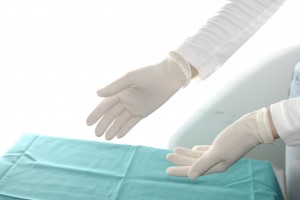AAAAI: Look out for latex in unexpected places

Allergic reactions to latex happen commonly in medical settings, where rubber gloves are in abundant supply. But less-visible elements in other environments can also pose danger, according to the American Academy of Allergy, Asthma & Immunology (AAAAI).
Consider that restaurant meals are frequently prepared by cooks wearing latex gloves. In schools, the cafeteria may be a threat, but there is also potential exposure to latex in school supplies. This type of inadvertent exposure poses a serious health risk to millions of Americans.
Estimates of latex allergy prevalence vary, but the condition disproportionately affects healthcare workers and others with frequent exposure to latex – including those who have had multiple surgeries. At least 10 percent of healthcare workers and more than half of individuals with spina bifida are believed to have the allergy, versus 1 percent to 6 percent of the general population.
Reactions to latex can result in skin irritation or anaphylaxis – which can be life-threatening.
Avoidance is key to preventing an allergic reaction and the responsibility of education often falls to the patient. The AAAAI recommends these tips for latex-allergic patients:
- Avoid contact with latex products, including gloves, balloons and condoms.
- Inform your doctors, dentist, family, employer and school personnel of the allergy and request accommodations as needed.
- Remember that the federal Americans with Disabilities Act provides workplace protections for individuals with latex allergy. If protective gloves are required for your job, your employer should consider an alternative synthetic material, which is equally effective in most situations.
- Ask your physician if you should wear a medical bracelet identifying your allergy.
An allergist/immunologist is the best-qualified medical professional to diagnose and treat latex allergy and other allergic diseases.